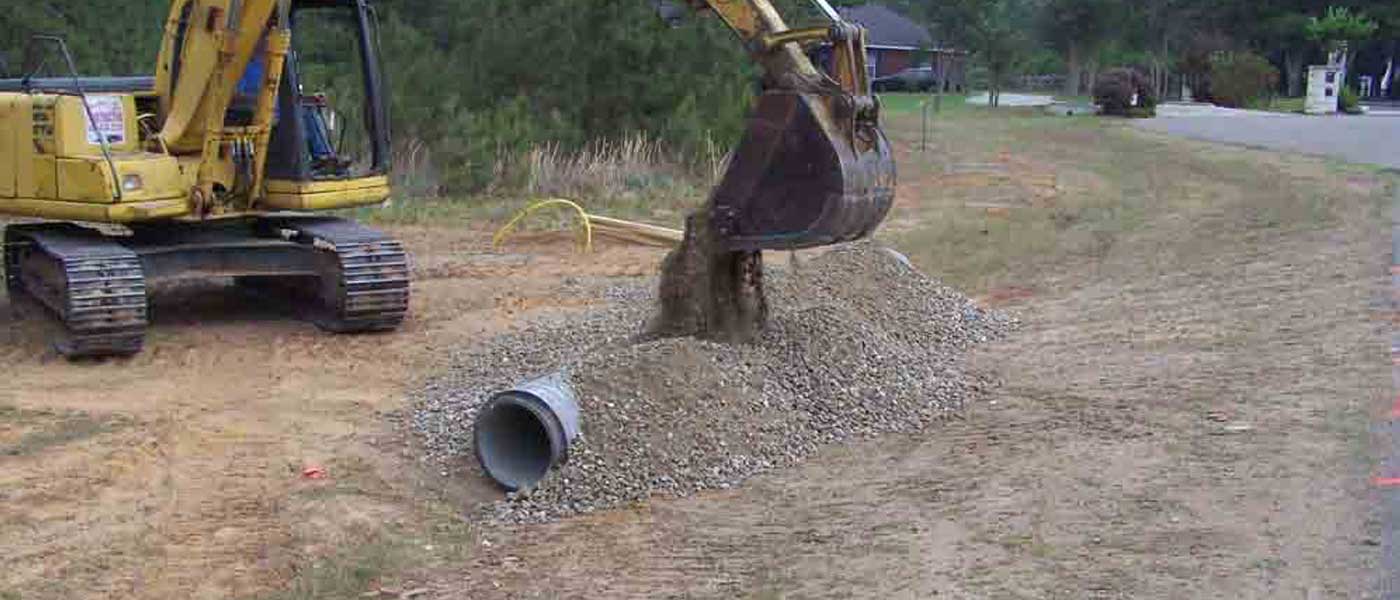Reliable Pad Construction for Your Job Requirements
Reliable Pad Construction for Your Job Requirements
Blog Article
Culvert Setup Made Easy: Step-by-Step Guide for Success
Installing culverts may feel like an uncomplicated job, yet making sure an effective result requires careful preparation and implementation. From choosing the proper culvert size to integrating appropriate drain steps, each step in the installment procedure plays a vital duty in the functionality and longevity of the culvert system. By complying with a systematic strategy and taking note of key details, the setup can proceed smoothly, decreasing prospective problems down the line. Remain tuned to discover the crucial steps and considerations that can make culvert setup a seamless and successful endeavor.
Picking the Right Culvert Size
Picking the proper culvert size is essential for ensuring effective water circulation and structural integrity in culvert installment jobs - Pad Construction. The dimension of the culvert straight affects the flow ability of water with the framework. A culvert that is also little can lead to flooding and overflow, while one that is also big may cause reduced water velocity, possibly causing debris build-up and obstructions
To determine the appropriate culvert size, variables such as the watershed area, top circulation rates, and hydraulic performance need to be meticulously considered. Computations based upon these specifications aid in choosing a size that can adequately manage the anticipated water volume while reducing the threat of blockages and architectural failing.
It is necessary to consult engineering standards and requirements to make certain that the chosen culvert size satisfies the task demands and local guidelines (Pad Construction). By picking the best culvert size, job managers can maximize water circulation, avoid prospective problems, and enhance the total effectiveness and longevity of the culvert setup
Preparing the Setup Website
Effective culvert installation requires meticulous prep work of the setup site to make certain ideal architectural assistance and performance. Before starting the setup procedure, it is essential to get rid of the website of any particles, greenery, or obstructions that could impede the culvert's positioning.
Furthermore, it is necessary to think about variables such as soil structure, groundwater levels, and environmental effects when preparing the setup website. Conducting an extensive site assessment can help determine any type of possible obstacles or dangers that might influence the culvert's efficiency. By taking the time to prepare the setup site correctly, you can aid assure an effective culvert setup that fulfills architectural needs and makes certain lasting performance.
Putting the Culvert Properly

The grade at which the culvert is put is crucial for maintaining a proper slope for water flow. A steady incline assists stop merging and advertises reliable drainage. In addition, the culvert needs to be oriented correctly to ensure that the inlet and outlet are in the correct places. This positioning is necessary for the culvert to operate successfully in handling water flow.
Backfilling and Compacting the Dirt
Proper backfilling and compaction of the dirt around the culvert is necessary to ensure security and prevent possible issues in the future. As soon as the culvert is properly put, the following important action is to backfill the area around it with ideal material.
After positioning the backfill product, it is very important to small it in layers of consistent thickness. Making use of a compactor or a mechanical tamper, compact the soil delicately to avoid damaging the culvert. Compaction aids in decreasing the opportunities of negotiation and guarantees consistent assistance around the culvert. It is vital to small the soil uniformly on all sides of the culvert to preserve its architectural integrity.
Correct backfilling and compaction not just provide stability to the culvert however also help in stopping dirt erosion and preserving the durability of the culvert system.
Making Sure Proper Drainage Integration
Integrating effective drainage services plays a critical function in the general performance and durability of culvert setups. Appropriate drain go to these guys integration is important for managing water flow, preventing disintegration, and making certain the architectural stability of the culvert system. To accomplish this, it is important to design a comprehensive drainage strategy that considers aspects such as the volume of water expected, the topography of the location, and the kind of soil present.

Additionally, integrating functions like erosion control procedures, such as riprap or plant life, can further enhance the effectiveness of the drain system. By meticulously preparing and applying these water drainage remedies, culvert installments can function efficiently and withstand the examination of time.
Final Thought
To conclude, appropriate culvert setup is vital for keeping reliable water drainage systems. By choosing the ideal culvert size, preparing the setup site, placing the culvert correctly, backfilling you can try these out and condensing the dirt, and ensuring proper water drainage assimilation, success can be attained. Complying with these steps will aid ensure the long life and performance of the culvert, eventually contributing to the overall success of the water drainage system.
Report this page